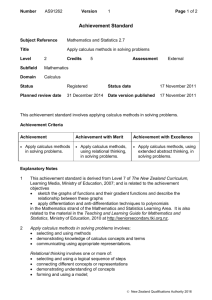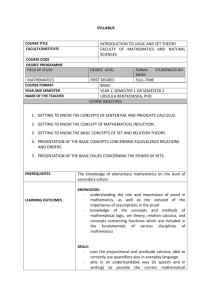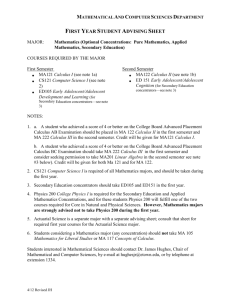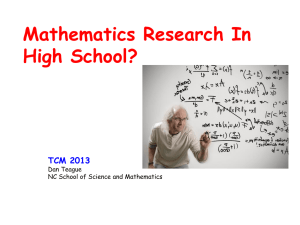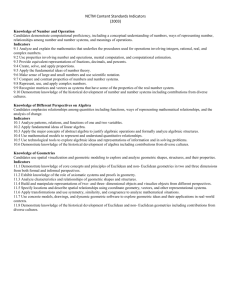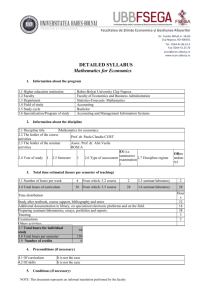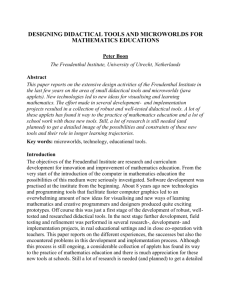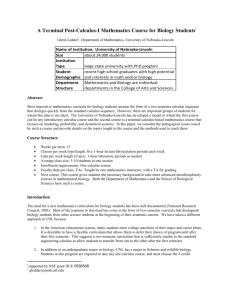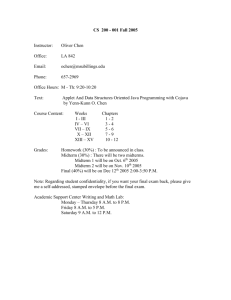“Undergraduate Research in Mathematics - Just Do It
advertisement
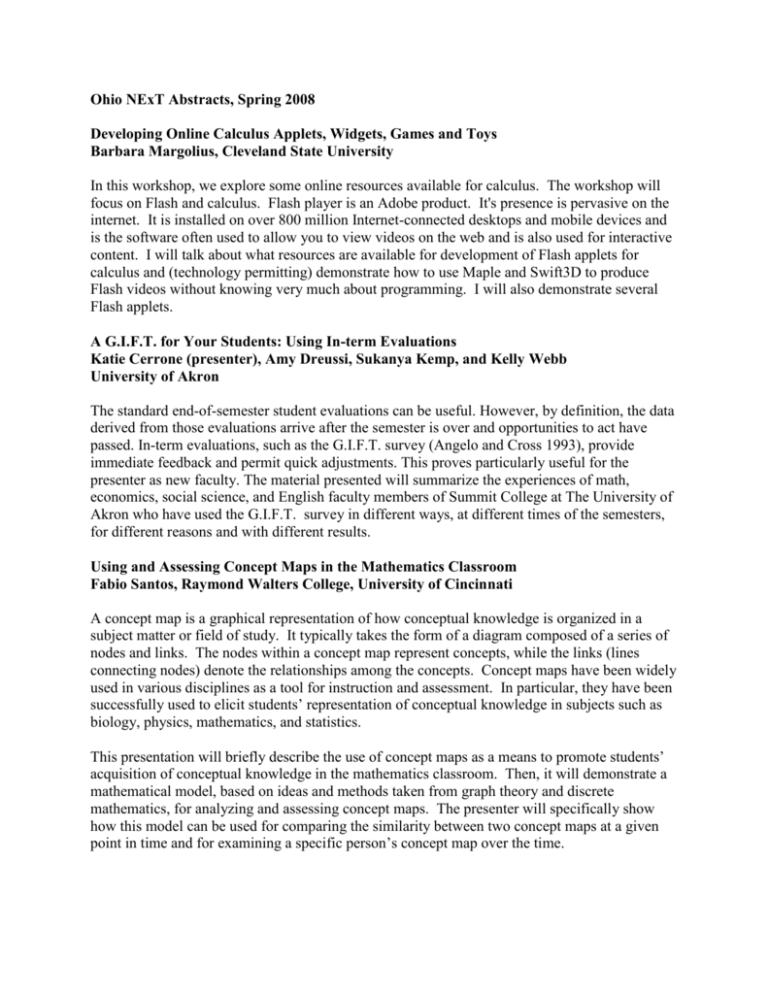
Ohio NExT Abstracts, Spring 2008 Developing Online Calculus Applets, Widgets, Games and Toys Barbara Margolius, Cleveland State University In this workshop, we explore some online resources available for calculus. The workshop will focus on Flash and calculus. Flash player is an Adobe product. It's presence is pervasive on the internet. It is installed on over 800 million Internet-connected desktops and mobile devices and is the software often used to allow you to view videos on the web and is also used for interactive content. I will talk about what resources are available for development of Flash applets for calculus and (technology permitting) demonstrate how to use Maple and Swift3D to produce Flash videos without knowing very much about programming. I will also demonstrate several Flash applets. A G.I.F.T. for Your Students: Using In-term Evaluations Katie Cerrone (presenter), Amy Dreussi, Sukanya Kemp, and Kelly Webb University of Akron The standard end-of-semester student evaluations can be useful. However, by definition, the data derived from those evaluations arrive after the semester is over and opportunities to act have passed. In-term evaluations, such as the G.I.F.T. survey (Angelo and Cross 1993), provide immediate feedback and permit quick adjustments. This proves particularly useful for the presenter as new faculty. The material presented will summarize the experiences of math, economics, social science, and English faculty members of Summit College at The University of Akron who have used the G.I.F.T. survey in different ways, at different times of the semesters, for different reasons and with different results. Using and Assessing Concept Maps in the Mathematics Classroom Fabio Santos, Raymond Walters College, University of Cincinnati A concept map is a graphical representation of how conceptual knowledge is organized in a subject matter or field of study. It typically takes the form of a diagram composed of a series of nodes and links. The nodes within a concept map represent concepts, while the links (lines connecting nodes) denote the relationships among the concepts. Concept maps have been widely used in various disciplines as a tool for instruction and assessment. In particular, they have been successfully used to elicit students’ representation of conceptual knowledge in subjects such as biology, physics, mathematics, and statistics. This presentation will briefly describe the use of concept maps as a means to promote students’ acquisition of conceptual knowledge in the mathematics classroom. Then, it will demonstrate a mathematical model, based on ideas and methods taken from graph theory and discrete mathematics, for analyzing and assessing concept maps. The presenter will specifically show how this model can be used for comparing the similarity between two concept maps at a given point in time and for examining a specific person’s concept map over the time. Training vs. Education -- Classroom vs. Office Mathematical Interactions with Students Leo Schneider, John Carroll University Peter Hilton was oft quoted as pointing out the irrational use of the terms Driver Education and Teacher Training. The word education comes from the Latin words ex (= out of) and ducare (to lead), as least if correctly I remember my high school Latin vocabulary. I have yet to learn how to do much “leading out” in the formal classroom. I suspect my approach to teaching and giving students practice in the Product Rule in first year calculus courses or in computing z-scores and looking them up in a table in first year statistics courses would be associated more closely with training than with “leading out.” So, classroom techniques will not be my topic. I think that when I have most often been engaged in education (leading out), has been in one on one conversations with mathematics majors in my office. Many times such interactions begin with “Have you ever noticed that...?” and continue with interactions for months, even years, with the student returning with an idea or solution and then one of us suggesting an extension that could be followed. Of course, some seeds of ideas spread in this way do not sprout, and this could be either due to where the seed was planted or to the seed itself. These seeds should certainly not be something one could use for a Ph.D. dissertation. In fact, they need not be unknown mathematical facts, just new ground for the student and new enough that, if the student gives a presentation of the results at a meeting such as the Ohio Section spring meeting, almost none of the students and only a minority of the faculty might have thought of the problem. I plan to share several of the “Have you ever noticed that...?” seeds that worked well and mention some of the results, hoping to start everyone thinking about seeds they might use with their students. If any of the Ohio NExT participants wonder about the appropriateness of a mathematical seed before planting it in a student, they should contact me at Leo@JCU.edu . In fact, I hope they will consider submitting some seeds to me as a homework assignment to be completed some time in the next year.

